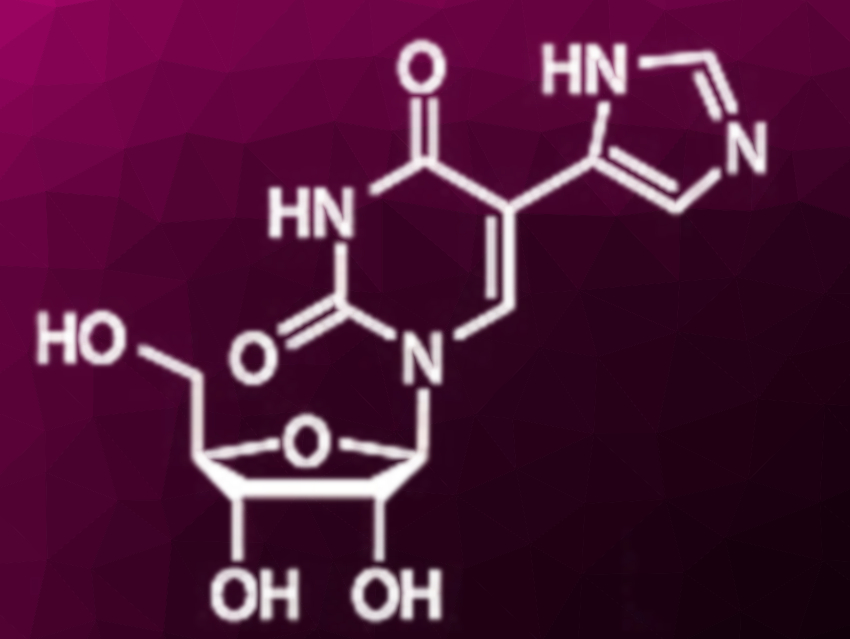Modified nucleosides have potential applications, e.g., as antiviral drugs and molecular probes. A particular class of modified nucleosides consists of the so-called fleximers, in which the nucleobase is turned to a bi(hetero)aryl sytem. They are inspired by disconnecting purine nucleobases into their imidazole and pyrimidine rings. In “conventional” fleximers, the nucleosidic bond is formed with the imidazole ring, and in “reverse” fleximers, the bond is formed with the pyrimidine ring.
Generally, such biheteroaryl systems are prepared through palladium‐catalyzed reactions such as Suzuki or Stille couplings. However, this requires a tedious, multi-step synthesis strategy due to the need for pre-functionalized building blocks and protection groups. This approach also poses problems when scaling up due to the expensive reagents and safety concerns.
Piet Herdewijn, KU Leuven, Belgium, and colleagues have developed a scalable, metal-free synthesis of 5-imidazolyl-uracil and a regioselective nucleoside formation with ribose (pictured below). The team started from commercially available uracil, which was hydroxymethylated at the 5‐position and oxidized to the corresponding aldehyde using potassium peroxodisulfate and a catalytic amount of silver nitrate. The aldehyde was then used in a Leusen imidazole synthesis with tosylmethyl isocyanide (TOSMiC) to give the desired nucleobase, an imidazole-substituted uracil. The nucleoside formation was then performed via the Vorbrüggen method, i.e., by protecting the nucleobase with trimethylsilyl groups using bis(trimethylsilyl)acetamide (BSA) and then reacting it with 1-O-acetyl-2,3,5-tri-O-benzoyl-D-ribofuranose in the presence of a Lewis acid. Finally, a deprotection of the benzoyl groups gave the desired product.

5-(Imidazol-4-yl)uridine was obtained in 55 % total yield in five steps. It shows improved fluorescent properties compared with similar fleximers. The formation of the only side product, 5-(8-ribofuranos-1′-yl)-imidazol-4-yl)uracil, could be largely suppressed when 1,2-dichloroethane (DCE) was used as the solvent, down to a ratio of ca. 1:12 compared with the main product.
- New metal-free route towards imidazole substituted uridine,
Henri-Philipppe Mattelaer, Anne-Sophie Van Hool, Flip de Jong, Mark Van der Auweraer, Luc Van Meervelt, Wim Dehaen, Piet Herdewijn,
Eur. J. Org. Chem. 2020.
https://doi.org/10.1002/ejoc.202000563




